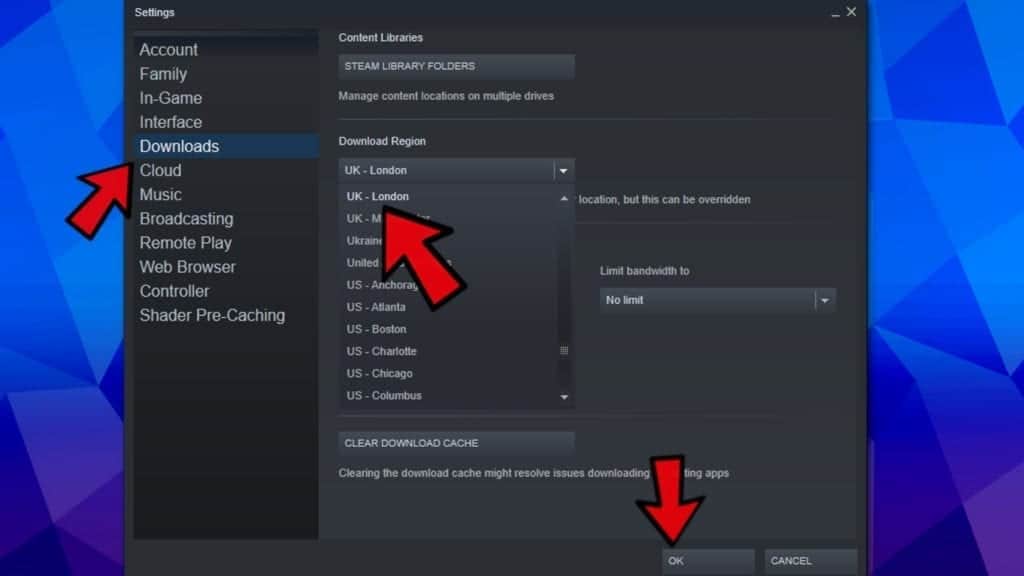

Steam also allows you to configure multiple game library folders.

You can then launch the Steam.exe program as if you had never moved Steam’s files. Just move it like you would any other folder. Steam allows you to move your Steam folder-which is at C:\Program Files (x86)\Steam by default-to another hard drive. One way to speed up all your games-and Steam itself-is by getting a solid-state drive (SSD) and installing Steam to it.

RELATED: What Is a Solid State Drive (SSD), and Do I Need One? Steam still provides a page that shows you the amount of download activity happening in different regions, including statistics about the difference in download speeds in different US states, but this information isn’t as useful. Steam once provided information about content server load, which allowed you to select a regional server that wasn’t under high-load, but this information is no longer available. A server a bit farther away could be faster if your local server is more congested, for example. In some cases, the closest server might not be the fastest. You may want to restart Steam and see if your download speeds improve after changing this setting. While you’re on this tab, make sure that Steam’s download bandwidth doesn’t have a limit applied. In the “Settings” window, switch to the “Downloads” tab, and then select the closest download server from the “Download Region” dropdown menu. Open Steam’s settings by clicking the “Steam” menu, and then selecting the “Settings” option. Also, in the case of high-traffic events like big seasonal sales and huge game launches, you may benefit from temporarily selecting a less-congested server. However, it may not always make the ideal choice. Steam attempts to automatically select the download server nearest to your location. In the unlikely event that you encounter some sort of problem with your network connection, you can always re-enable the “Automatically detect settings” option. With any luck, the significant delay you experienced every time a web page loaded in Steam’s browser should now be gone. You can then click “OK” again to close the “Internet Properties” window. In the “Internet Properties” window, switch to the “Connections” tab, and then click the “LAN settings” button.ĭisable the “Automatically detect settings” check box, and then click “OK” to save your settings.
#INCREASE STEAM DOWNLOAD SPEED 2017 WINDOWS#
Press the Windows key to open the Start menu, type “Internet Options”, and then click the Internet Options shortcut. This is a compatibility option that very few people should actually need, so it’s safe to disable it-and easy to re-enable if you need to. This problem seems to arise from an incompatibility with the Automatically Detect Settings option, which is enabled by default on Windows. However, there’s a trick that may eliminate this delay on many systems and make the Steam web browser more responsive. You may have made peace with this slowness, accepting that Steam’s built-in browser is just bad. When you click a link or go to a new page, there’s a noticeable delay before the new page appears-something that doesn’t happen in desktop browsers. Rather than the typical speed we’ve come to expect from Chrome, Firefox, or even Internet Explorer, Steam seems to struggle.

Steam’s built-in web browser-used in both the Steam store and in Steam’s in-game overlay to provide a web browser you can quickly use within games-can be frustratingly slow. RELATED: 5 Tips and Tricks to Get the Most Out of Steam


 0 kommentar(er)
0 kommentar(er)
